Look on a map and the boundaries that divide North and South America, Southern California and Mexico, are as clear as the thick lines that demarcate them. Yet, in real life, the borders separating these regions ― the people that inhabit them, the cultures they cultivate, the myths they pass on and the memories they leave behind ― are far more nebulous.
Perhaps nothing illustrates the fallibility of borders like an art object ― a single painting, sculpture or video that can collapse the categories between here and there, then and now, you and I. An artist born in Mexico who studied in Paris and later moved to Los Angeles makes work that weaves together elements of them all, contorted, of course, by memory and imagination and the other invisible forces that govern the way we see, think and create.
In 2017, a massive art initiative called “Pacific Standard Time: LA/LA” will explore the influence of Latin American and Latinx artists on Southern California with a sprawling series of exhibitions taking over more than 60 venues across Los Angeles, Santa Barbara, San Diego and other California destinations.
The initiative will shine a spotlight on the many individuals and movements whose artistic visions traversed language barriers and geographic boundaries to share stories, challenge beliefs and create a visual vocabulary for future generations. Just as there is no typical Latin American or Latinx person, the interconnected exhibitions will show that there is no single definition of Latin American or Latinx art.
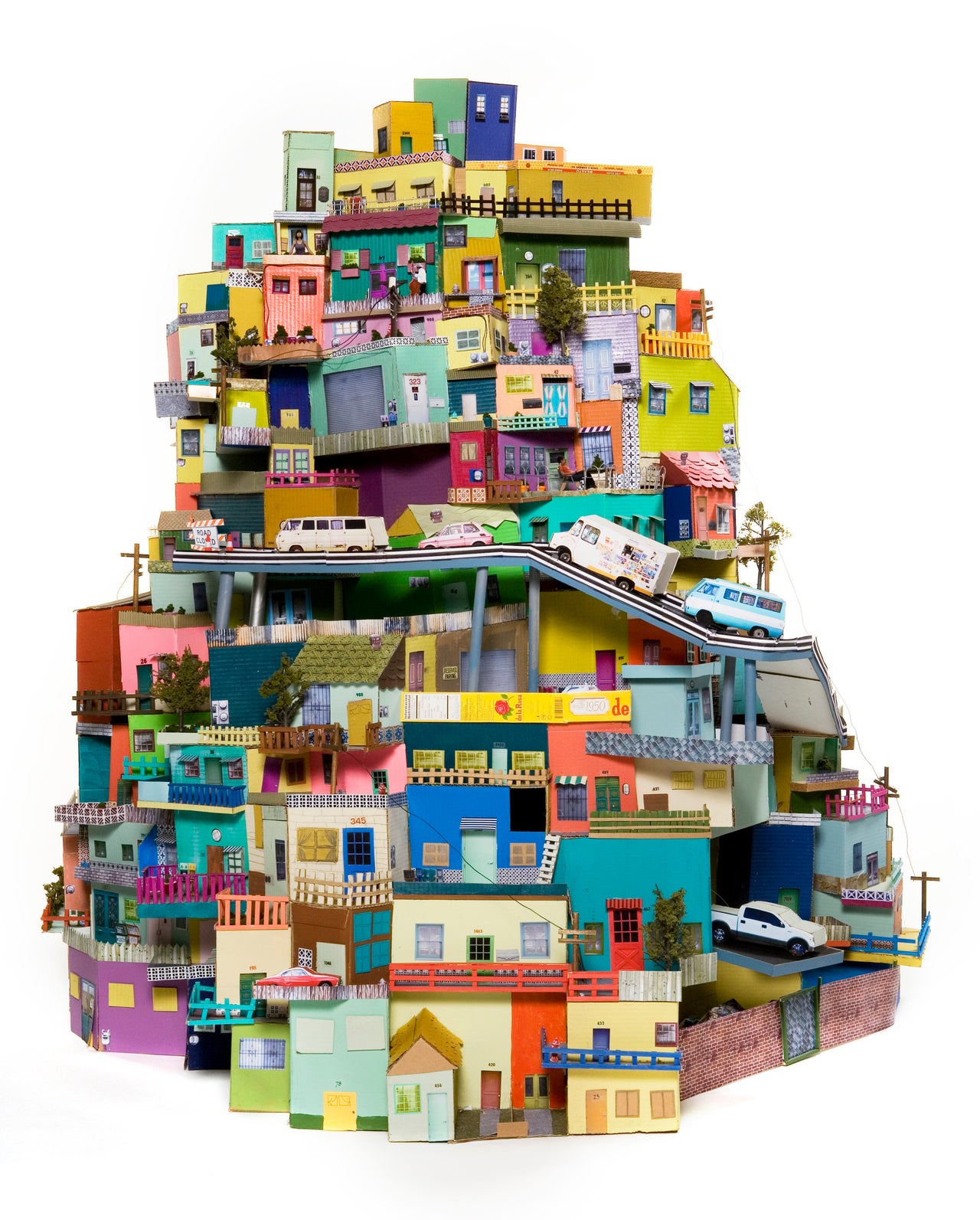
Although planning for “LA/LA” was underway far before last week’s presidential election, the art program will serve as a vital repudiation of the simplistic and intolerant messages communicated by President-elect Donald Trump regarding American identity. In response to dangerous stereotypes and shortsighted plans to build walls between us, hundreds of artists, curators and institutions will highlight the importance of intersectionality both in their artistic practices and approach to citizenship itself.
There are too many exciting exhibitions and artists coming next year ― radical women in Latin American art, Afro-Brazilian art, queer Chicano art, Mesoamerican art, experimental film in Latin America and so, so, so much more ― to explain them all in detail. You can see the full list here.
In the meantime, we’ve compiled a very small selection of the artists coming to “LA/LA” in 2017, most of whom are still critically overlooked in terms of their influence and importance. Learn their names, mark your calendars and get ready to immerse yourself in all that is Latin American and Latinx art.
1. Laura Aguilar (b. 1959, United States)
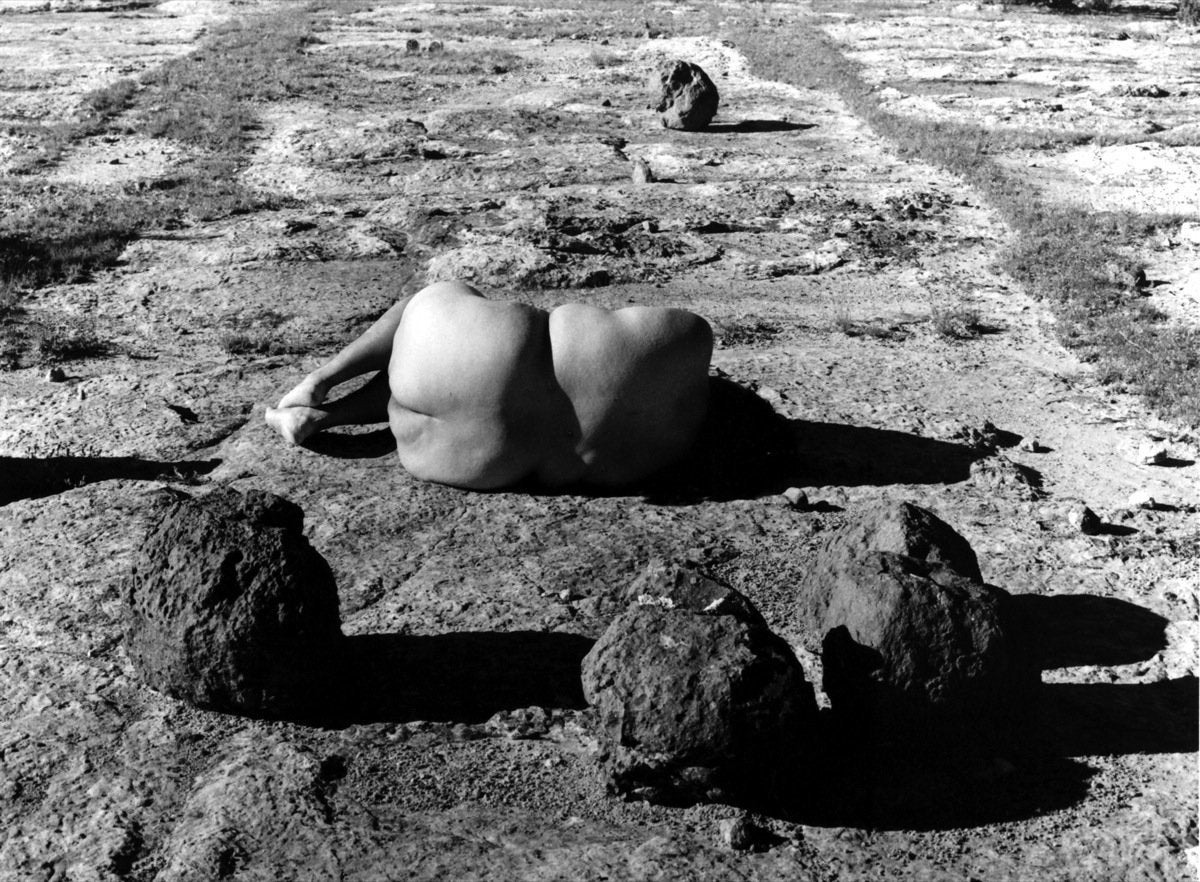
Laura Aguilar is a self-taught photographer whose portraits capture marginalized communities with grace and pride as they unravel traditional beauty norms. Her series “Latina Lesbians” chronicles the gay Chicano women in Aguilar’s community she felt had been rendered invisible by mainstream culture.
“What I am trying to do with the series,” Aguilar wrote in a statement, “is to provide a better understanding of what it’s like to be a Latina and a Lesbian by showing images which allow us the opportunity to share ourselves openly, and to provide role models that break negative stereotypes and help develop a better bridge of understanding.”
The artist also takes stark portraits of her own (often unclothed) body in nature, which serve to challenge and dismantle photography’s monolithic norms regarding beauty and femininity.
Aguilar’s work will be on view at the following: “Laura Aguilar: Show and Tell” at Vincent Price Art Museum, East Los Angeles College; “Axis Mundo: Queer Networks in Chicano L.A.” at the University of Southern California’s ONE National Gay & Lesbian Archives; and “Home–So Different, So Appealing,” organized by the Chicano Studies Research Center at the University of California at Los Angeles, the Los Angeles County Museum of Art and the Museum of Fine Arts Houston.
2. Carmen Argote (b. 1981, Mexico)
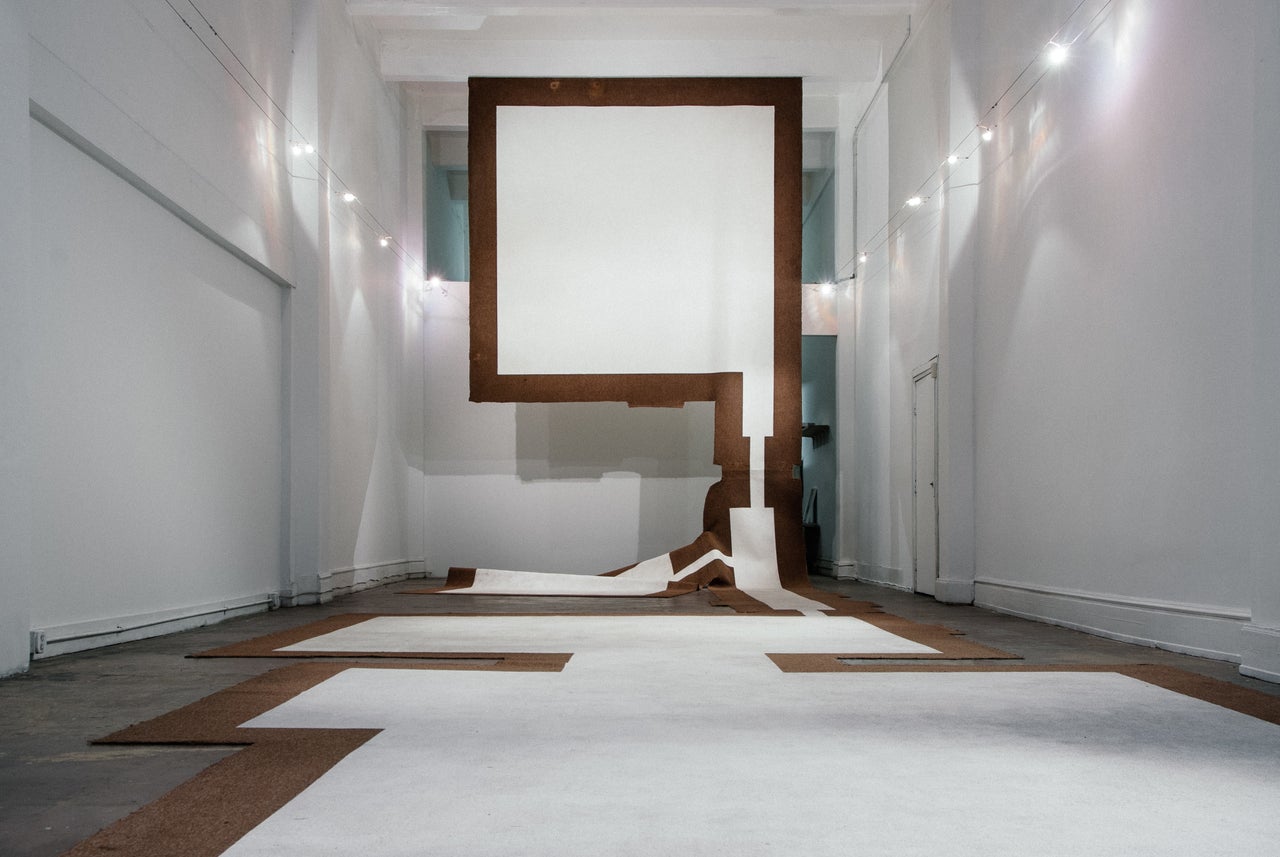
Carmen Argote creates multimedia architectural installations to explore understandings of home and space as they relate to her as an immigrant. Her artworks delve into the intersections of memory and myth, house and home, and family and class.
“I work from an intimate and personal place,” she explained in a statement, “using shared experiences to connect the spaces that house us to notions of home and self. Often working with family, I explore our common immigrant experience as a layered, multigenerational, transnational experience that is echoed though shared memories, traumas, and aspirations, extending outward from the intimate space of home.”
Argote’s work will be featured in “Home–So Different, So Appealing.”
3. Juan Downey (1940-1993, Chile)
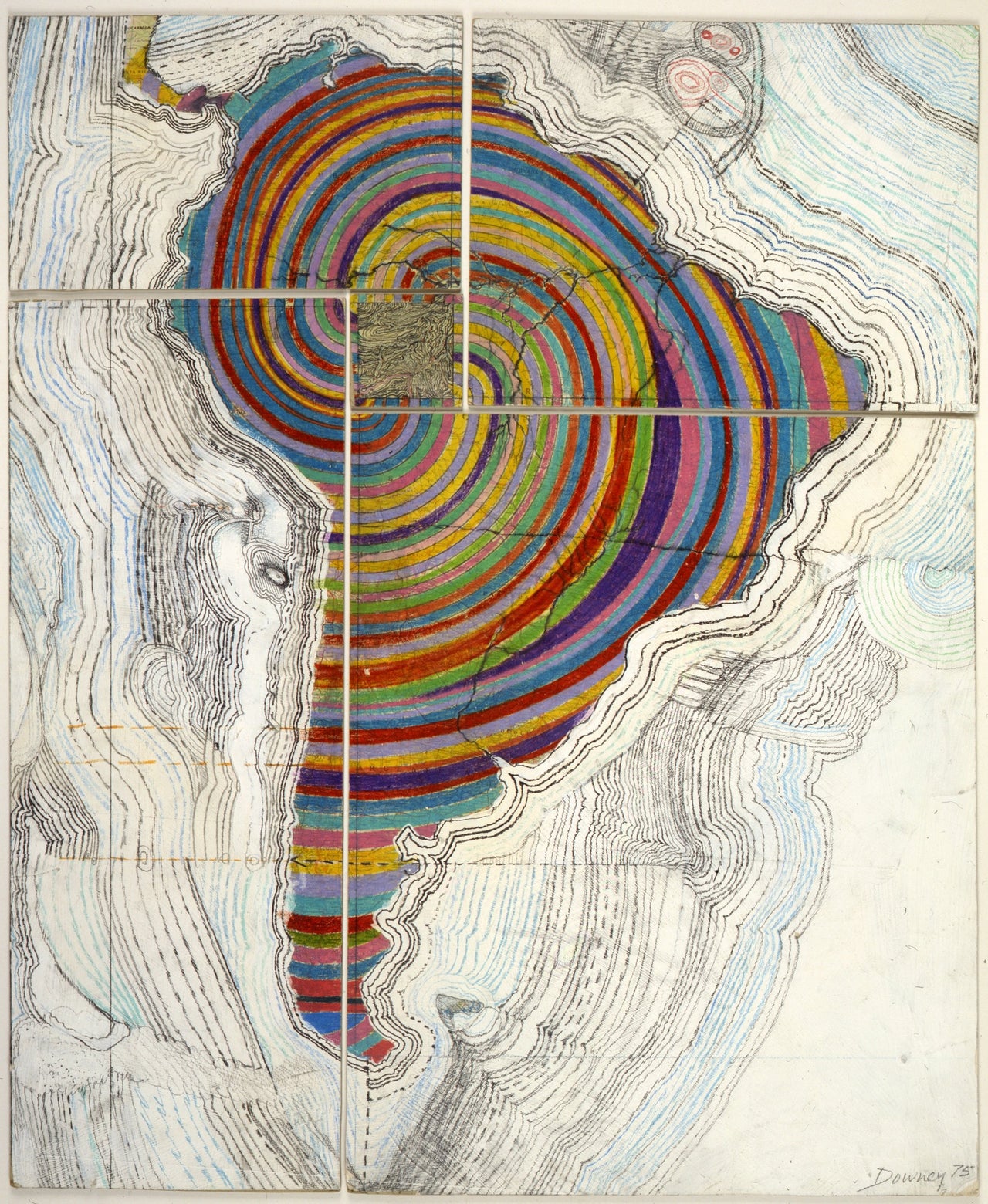
Juan Downey’s work in drawing, installation, new media, painting, performance, printmaking, and, most notably, video often explored notions of identity and otherness via experimental ethnographies challenging boundaries of all kinds.
Originally trained as an architect, Downey began toying with new technologies in the 1960s. When the handheld video camera debuted later in the decade, Downey began using it to interrogate the relationship between Westerners and indigenous cultures in the Americas, obscuring the traditional categories of “self” and “other” through his split-screen and multi-channel videos.
In a statement, the late artist expressed his goal to “stretch the limits of the documentary format, to convey the intensely personal experience of which the primitive landscape is composed, by means of organized sequences of body movements and natural rhythms.”
Downey’s work will be featured in the following: “Juan Downey: Radiant Nature” at Los Angeles Contemporary Exhibitions and Pitzer College Art Galleries; “The Making of the Modern: Indigenismos, 1800-2015” at the San Diego Museum of Art; “Memories of Underdevelopment” at the Museum of Contemporary Art San Diego; and “Video Art in Latin America” at LAXART.
4. León Ferrari (1920-2013, Argentina)
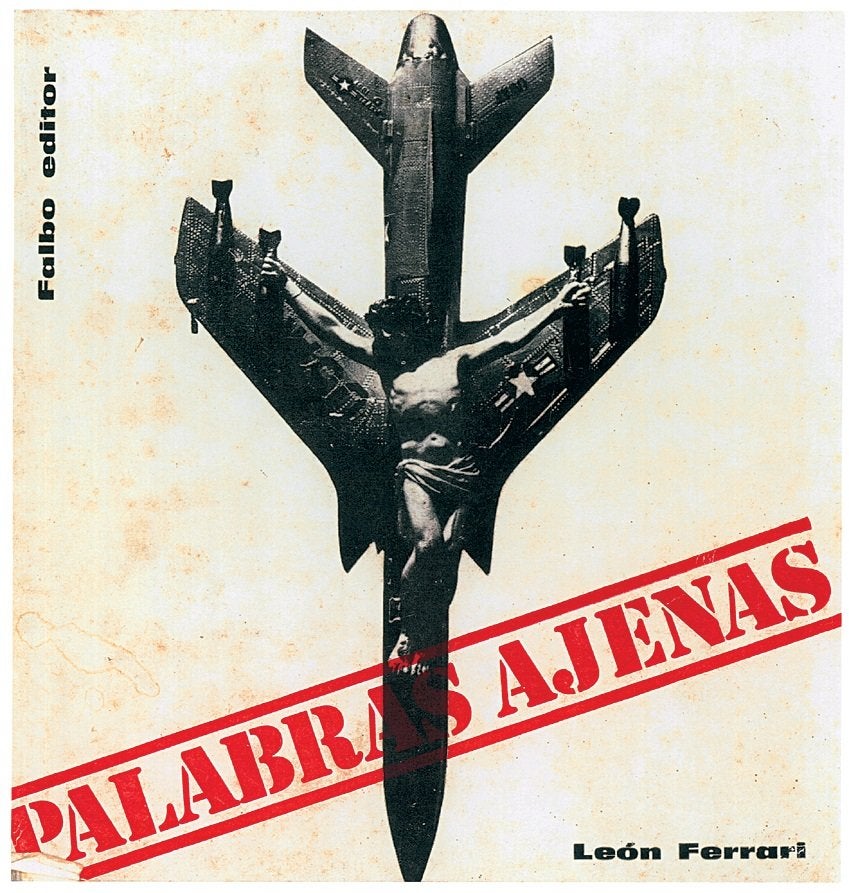
In the 1960s, León Ferrari published a manifesto that declared: “Art is not beauty or novelty; art is effectiveness and disruption.” Throughout his life, the artist worked in a wide range of media from ceramics to poetry to dismantle authoritarianism and establish parallels between religion and war.
One of his most well-known images, featured above, depicts Jesus Christ crucified on a fighter plane, a protest against the Vietnam war. Other notable works include a Virgin Mary statue in a blender and Christ figures in a toaster.
“The only thing I ask of art is that it helps me express what I think as clearly as possible, to invent visual and critical signs that let me condemn more efficiently the barbarism of the West,” the artist wrote in 1965. “Someone could possibly prove to me that this is not art. I would have no problem with it, I would not change paths, I would simply change its name, crossing out art and calling it politics, corrosive criticism, anything at all, really.”
Ferrari’s work will be featured in the following: “Home–So Different, So Appealing”; “Memories of Underdevelopment’; “Copyart: Experimental Printmaking in Brazil, 1970-1990s” at the University of San Diego; and “Palabras Ajenas” at the Roy and Edna Disney/Cal Arts Theater.
5. Anna Maria Maiolino (b. 1942, Italy)
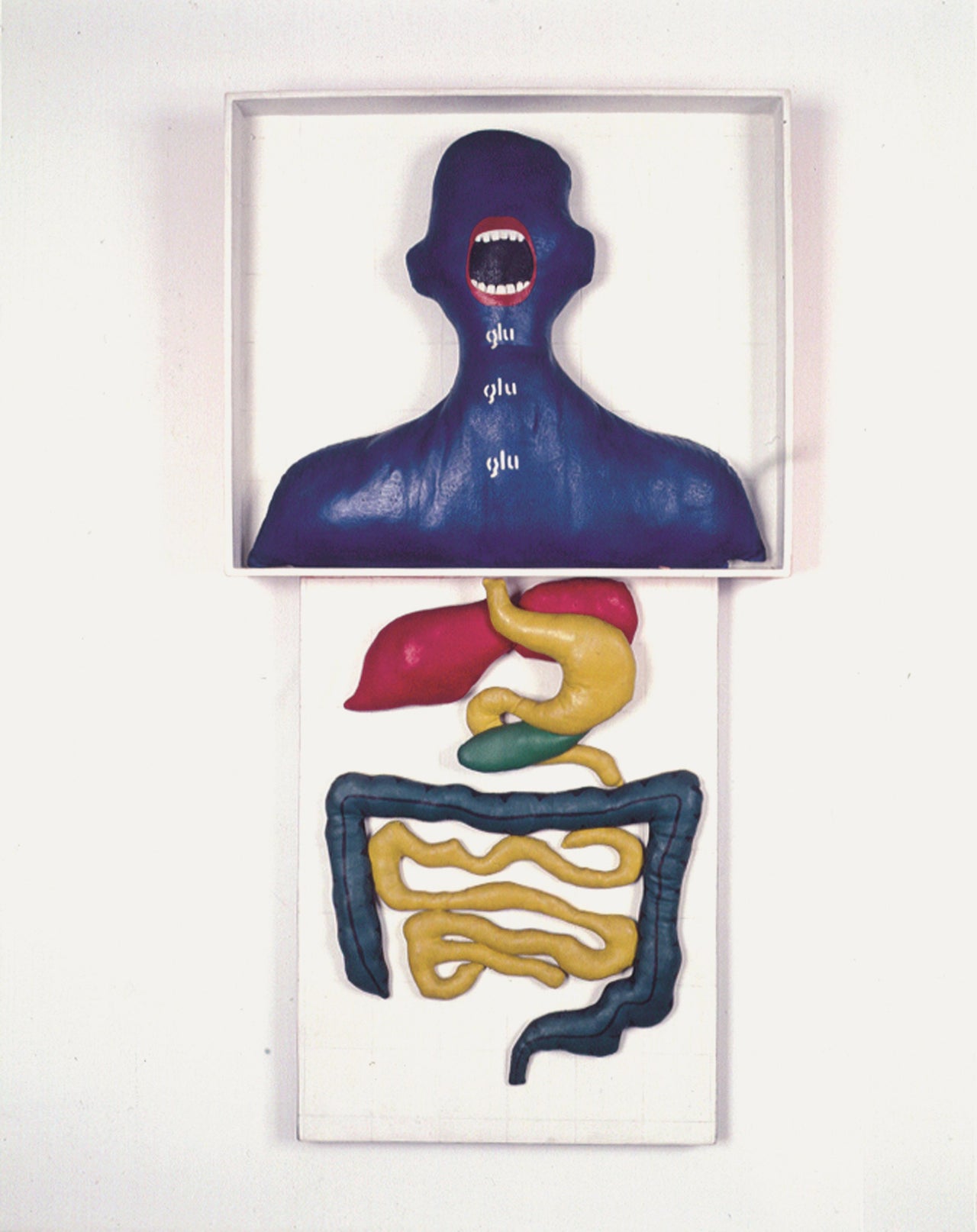
Anna Maria Maiolino was born in Italy to an Italian father and Ecuadorian mother. The family relocated to Venezuela when Maiolino was 12, and Brazil soon after that. Working in sculpture, drawing, painting, performance, video and poetry, the artist’s work returned to visceral sensations of uprootedness, longing and emptiness.
The artist speaks in a primal visual language at once abstract and accessible, using the body and its everyday functions as a starting point to explore embodied feelings from desire to political unrest.
“I would go as far as saying that my works about digestion come from what my mouth remembers of my mother’s breast, the comfort of that first food,” the artist said in an interview, “while as a counterpoint, I see defecation as the ‘first work.’ For, if the body is the architect of work, it is not surprising that in some cultures they refer to defecation as ‘work.’ We live and die from the mouth to the anus. I find it impossible not to talk, not to poetise about what comes in and out of the body, when these are experiences that are fundamental, corporal and vital to us.”
Maiolino’s work will be featured in “Anna Maria Maiolino” at the Museum of Contemporary Art in Los Angeles and “Radical Women in Latin American Art, 1960-1985” at the Hammer Museum in Los Angeles.
6. Valeska Soares (b. 1957, Brazil)

Through her organic installations, Valeska Soares infuses three-dimensional spaces with dreams and decay, exploring the effects of memory on the places we inhabit. Combining elements of minimalism, conceptualism, Land Art and Fluxus with features of her Brazilian artistic counterparts ― including Lygia Clark and Mira Schendel ― Soares investigates the effects of time and the ways it is perceived and experienced in the mind.
Using found and domestic objects, serial repetition and things prone to change and decay, the artist creates quiet theatrical sets that resist traditional notions of time and place, as well as boundaries between the personal and universal.
“I’m interested in subjective borders,” the artist explained in an interview with Vik Muniz. “The limits that you impose on yourself and how illusionary they are. I’ve also been dealing with ideas of reflection and distortion, how you think things are and how you see them, and what gets distorted between those two perceptions. For instance, I don’t know how I look or how I’m perceived. I have this imaginary ‘Valeska’ in my mind. And each time I look at myself in the mirror, I can’t recognize myself because what I see reflected is not exactly who I think I am.”
Soares’s work will be featured in “Valeska Soares” at the Santa Barbara Museum of Art.
7. Hector Hernandez (b. 1975, United States)
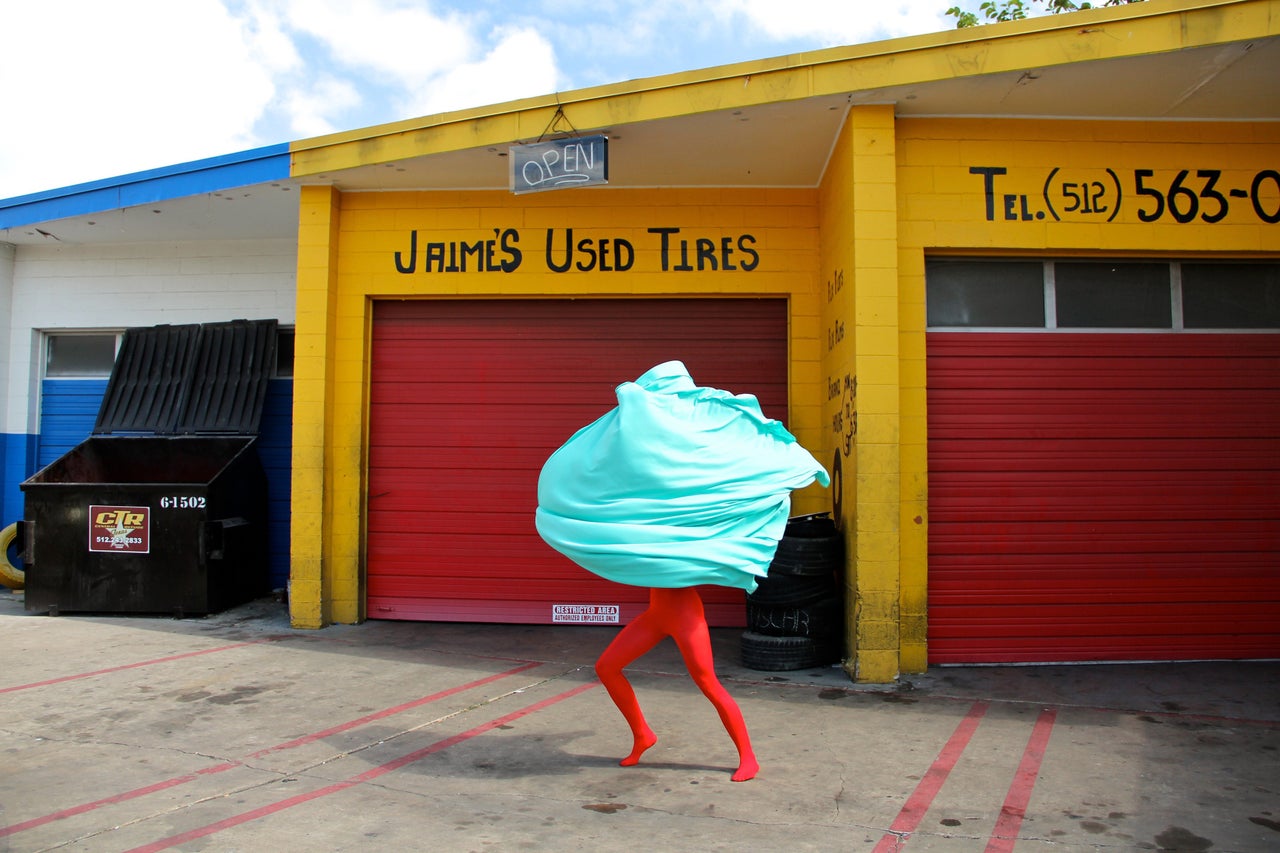
Hector Hernandez’s work toys with shape from the human figure to geometric sculpture. The artist creates hybrid forms that are part person, part other, and documents them moving in space, bringing whiffs of science fiction, camouflage and fantasy into everyday life.
“I am interested in the tension that exists between a form such as human legs or cylinders and the space which it both occupies and is contained by,” the artist explains in a statement. “My long history with mixed media and photography has driven my most current work, as I have returned to such traditional materials as paper, fabric, photographed images, and fabricated artifacts to produce works that focus on the process of creating surreal characters/creatures.”
Hernandez’s work will be featured in “Mundos Alternos: Art and Science Fiction in the Americas” at the University of California at Riverside.
8. David Lamelas (b. 1946, Argentina)
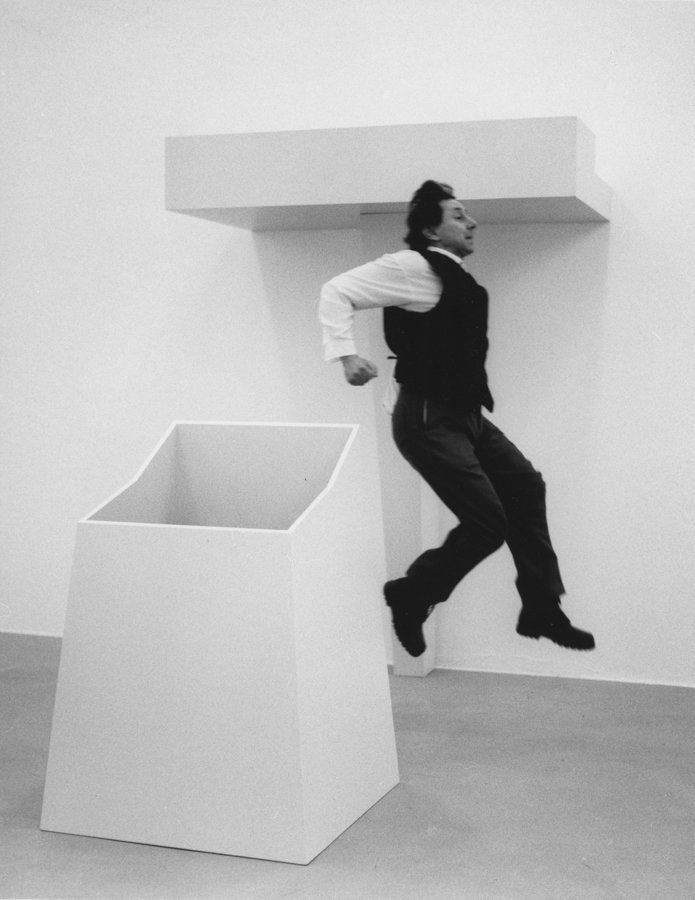
David Lamelas is regarded as a pioneer of conceptual photography and avant-garde film. At only 21 years old, his work represented Argentina in the São Paulo Biennial and in the Venice Biennale the year after. Lamelas deals with issues of time, movement, space and popular culture.
The artist, who now lives between Los Angeles, Buenos Aires and Europe, is known for his fictional documentaries and fake Hollywood film stills, which predate Cindy Sherman in their manipulation of photography’s claims to truth. In them, Lamelas pretends to be a rock star, investigating the way images do not archive celebrities, but create them.
Lamelas’s work will be featured in “David Lamelas: A Life of Their Own” at the CSU Long Beach University Art Museum.
9. Marie Orensanz (b. 1936, Argentina)
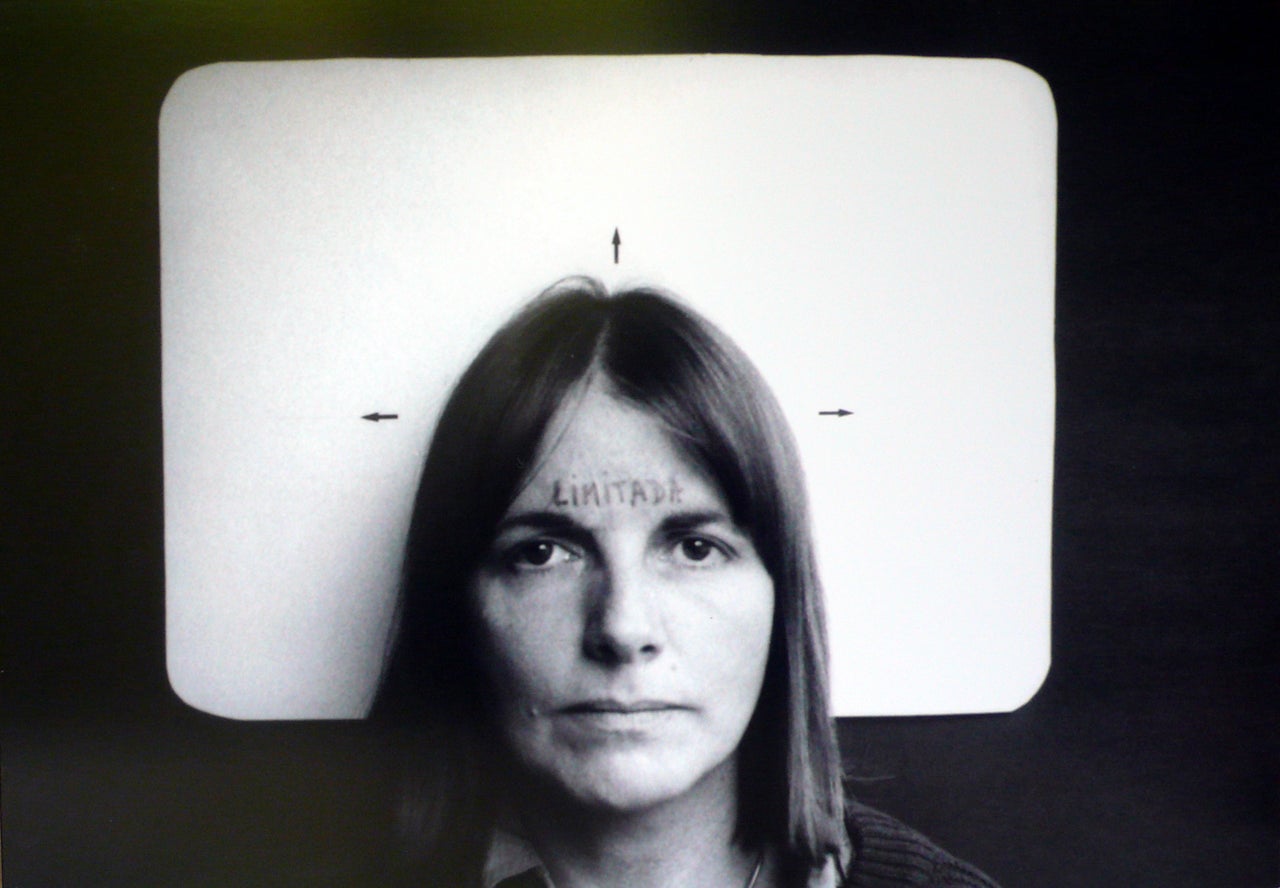
Marie Orensanz’s work deals with fragments ― fragments of marble, fragments of thoughts, fragments of symbols ― to represent the fragmented self. In 1978, shortly after becoming a French citizen, the artist detailed the mission of her work in a Manifesto of Fragmentism: “Fragmentism searches for integration of a part with a totality; transforms by multiple readings in an object non-terminate and unlimited, traversing time and space.”
Working in photography, painting, drawing and sculpture, Orensanz’s aesthetic aligned her disparate media ― a style that is sparse, ambiguous, symbolic and yet eventually indecipherable. Much of her work hinted at a hidden meaning that remained unsolved, alluding to the indecipherable nature of truth and life. In the artist’s words: “The incomplete is a constant of my work, because I think that we are all fragments of a whole: at the same time, we are part of a past and of a future.”
Orensanz’s work will be included in “Radical Women in Latin American Art, 1960-1985.”
10. Alfredo Ramos Martinez (1871-1948, Mexico)
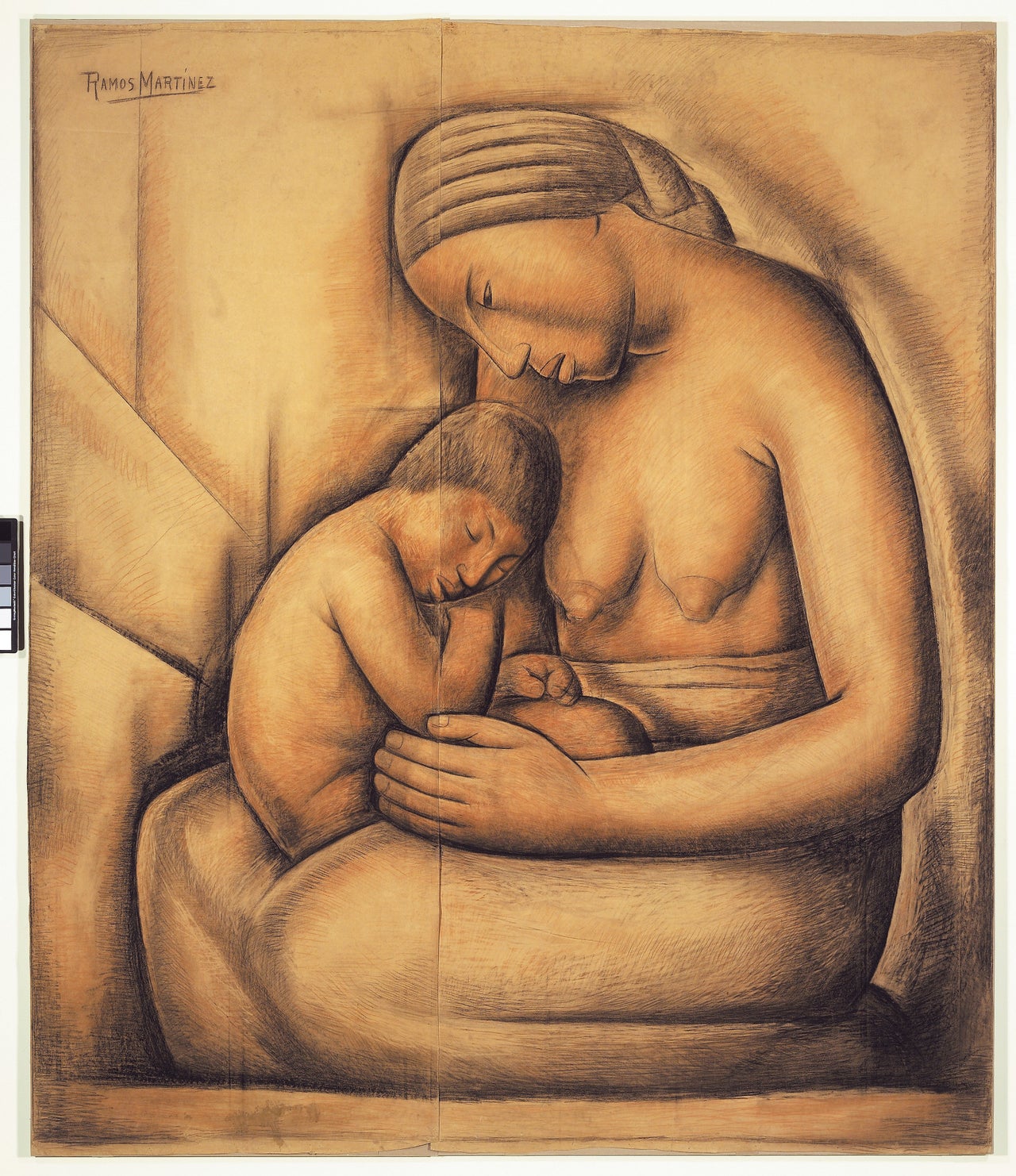
Martínez, a painter and muralist, is known by many as the “Father of Mexican Modernism” thanks to his empathetic depictions of traditional Mexican peoples and landscapes at the turn of the 20th century.
Living in Mexico, Paris and eventually Los Angeles, Martínez incorporated elements of Mesoamerican art, French Impressionism, Cubism and Art Deco into his designs while maintaining a traditional Mexican aesthetic. Combining pulsating lines, geometric shapes and subtle shading, Martínez achieved a singular aesthetic that incorporated elements of architecture and abstraction.
The Mexico that Martínez depicted was both real and imagined, inhabited and remembered, full of beauty and sorrow. As poet Rubén Darío wrote, “Ramos Martínez is one of those who paints poems; he does not copy, he interprets; he understands how to express the sorrow of the fisherman and the melancholy of the village.”
Martinez’s work will be featured in the following: “The Making of the Modern: Indigenismos, 1800-2015”; “Mexico/LA: History into Art, 1820-1930” at the Laguna Art Museum; and “Mexico and California Design, 1915-1985” at the Los Angeles County Museum of Art.

